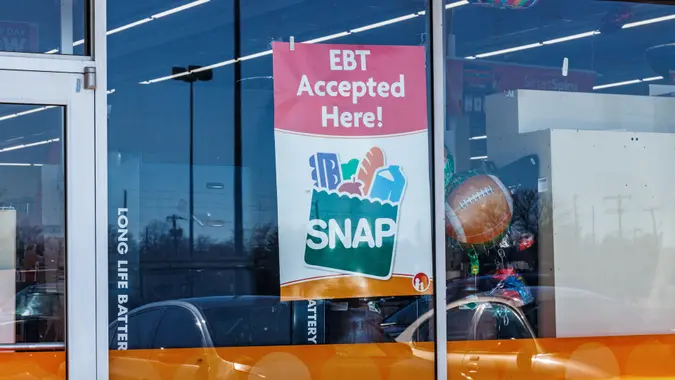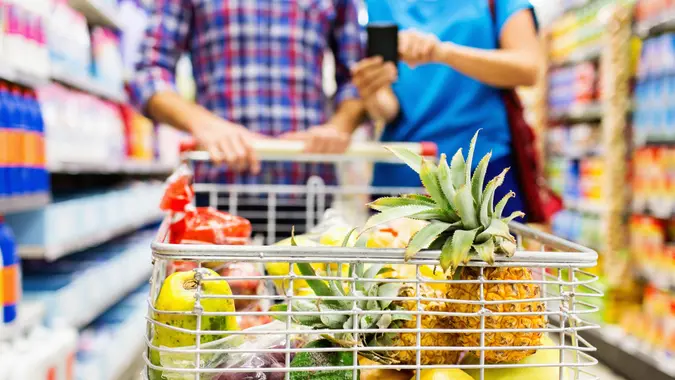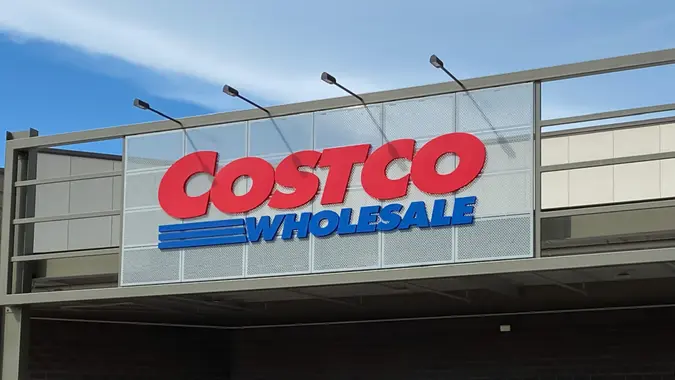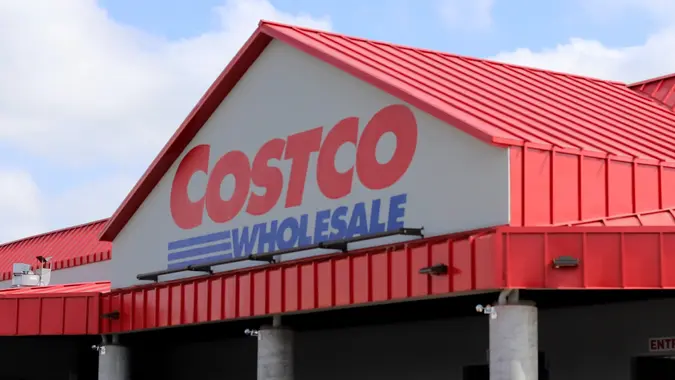Is ‘Sushi-Grade Tuna’ Worth the Price? 6 Food Labels That Don’t Justify the Cost

Commitment to Our Readers
GOBankingRates' editorial team is committed to bringing you unbiased reviews and information. We use data-driven methodologies to evaluate financial products and services - our reviews and ratings are not influenced by advertisers. You can read more about our editorial guidelines and our products and services review methodology.

20 Years
Helping You Live Richer

Reviewed
by Experts

Trusted by
Millions of Readers
You’ve probably encountered a few misleading food labels when grocery shopping. Terms like “all-natural,” “organic” and “no salt added” sound beneficial, but what do they really mean? Is the product better quality than others without the label?
In many cases, official-sounding terms and phrases are marketing-speak designed to encourage you to spend extra money. They don’t mean the product is higher quality or free of sugar, salt or other ingredients. Here’s a look at several ambiguous food labels, what they mean, and how much they can inflate your grocery bill.
Sushi-Grade
If sushi is high on your favorite food list, you might decide to get adventurous and make it at home. After all, dining out is expensive, and learning to make sushi rolls could help you save money. Plus, it’s fun — who doesn’t like a bit of kitchen artistry?
However, making sushi at home isn’t as simple as buying the first salmon you come across at the grocery store. If that fish is marked “sushi-grade,” you should know the term doesn’t mean anything. Neither the FDA nor the USDA regulates the “sushi-grade” label, so it’s essentially just a marketing term to sell more fish. There is also no standardization across brands regarding what “sushi-grade” means.
If you’re set on making sushi at home, you’re better off shopping at a specialty grocery store or fish market that can tell you whether the fish is safe for raw consumption. Fish previously frozen to temperatures of -31 degrees Fahrenheit carries a low risk of parasites.
How much can you save by skipping the “sushi-grade” label? It varies. One company sells a three-pound pack of “sushi-grade” salmon for a whopping $245. However, it doesn’t indicate whether it’s frozen to the desired levels for raw consumption. In comparison, you could pick up three pounds of salmon at a grocery store for around $36.
Free-Range
When buying eggs, you might see brands that include “free-range” in their labeling. But does that mean the eggs come from chickens with free rein on their local farm, running up and down the pasture to their heart’s content? Not at all.
The only requirement brands must meet to include “free range” on a package label is that it provides chickens some access to the outdoors. There is no set time limit or space requirement, and brands may show compliance by providing a “pop hole” that a chicken can stick its head out of while still confined to a coop.
You can find grocery stores that sell a dozen free-range eggs for $4.99. A pack of non-free-range eggs at the same store costs $2.59.
Natural
When used in the context of meat, poultry or egg products, “natural” means that the food underwent minimal processing and contains no artificial ingredients. If the USDA certifies the product as “natural,” you can feel confident that the label is accurate.
However, no food organization, including the FDA or the USDA, places standards on using “natural” labeling in non-meat or dairy products. That means your all-natural carton of fruit juice might not be as “natural” as it claims to be.
For instance, one famous juice brand uses “all-natural” labeling but its products contain 20 grams of added sugars. The juice is $5.29 for 52 ounces, compared to $4.79 for a brand that doesn’t use “all-natural” in its labeling.
Organic
Organic refers to foods made without exposure to fertilizers, irradiation, sewage sludge or genetic engineering. A food must have 95% or more organic content to qualify for the USDA organic seal of approval.
Multi-ingredient foods, such as soups or breads, may include organic labeling if each organic ingredient is specified. However, there is no guarantee that all ingredients used in soups or other items are organic. That means some ingredients of your soup may be organic while others are not.
If consuming a pesticide and genetic-engineering-free diet is vital to you, know that the organic label isn’t as stringent for packaged goods and meals. Buying organic products may also increase your grocery costs. For instance, a single frozen bean and cheese burrito with organic labeling costs $4.59. In contrast, you can buy an eight-pack of non-organic frozen bean and cheese burritos for $5.59, or $0.70 per burrito.
Whole Grain
Whole grains contain all the parts of a grain, including the bran, germ and endosperm. They’re considered more nutritious than refined grains since they contain more fiber, nutrients and vitamins. Eating a diet that includes whole grains is good for your heart and may lower the risk of certain diseases, including diabetes. However, many grain-related foods like bread and crackers use the whole grain label, which can be misleading.
To know whether a food is truly whole grain, look for a Whole Grain Stamp provided by the Whole Grains Council. If there is no stamp, look at the package ingredients. If the ingredients list “whole wheat” or “whole grain [name of grain],” you can feel confident in the package label. However, if ingredients include enriched or wheat flour, it’s not genuinely whole grain.
A loaf of brand-name, whole-grain bread costs $5.29 at the grocery store but contains whole wheat flour as its top ingredient, meaning it doesn’t meet the requirements to be 100% whole grain. A similar loaf made from 100% whole wheat is $4.29.
Made With Real Fruit
The FDA does not restrict brands from using the “made with real fruit” label, even on items like gummy snacks and roll-ups typically made from fruit juice concentrates and flavorings. Some brands try to distinguish their gummy products as healthier by using the “made with real fruit” label, which can encourage health-oriented consumers to buy the product, even when a whole fruit is more nutritious.
Brands that use the “made with real fruit” label may also charge higher prices. For instance, a 10-pack box of gummy snacks using the “made with real fruit juice” label is $6.99 at the grocery store. A similar product without the labeling is $4.19.
Final Take
A little skepticism about labels can take you a long way at the grocery store. If buying the healthiest food is important to you, make sure to check the fine print. Both your body and your wallet will thank you.
 Written by
Written by  Edited by
Edited by 

























